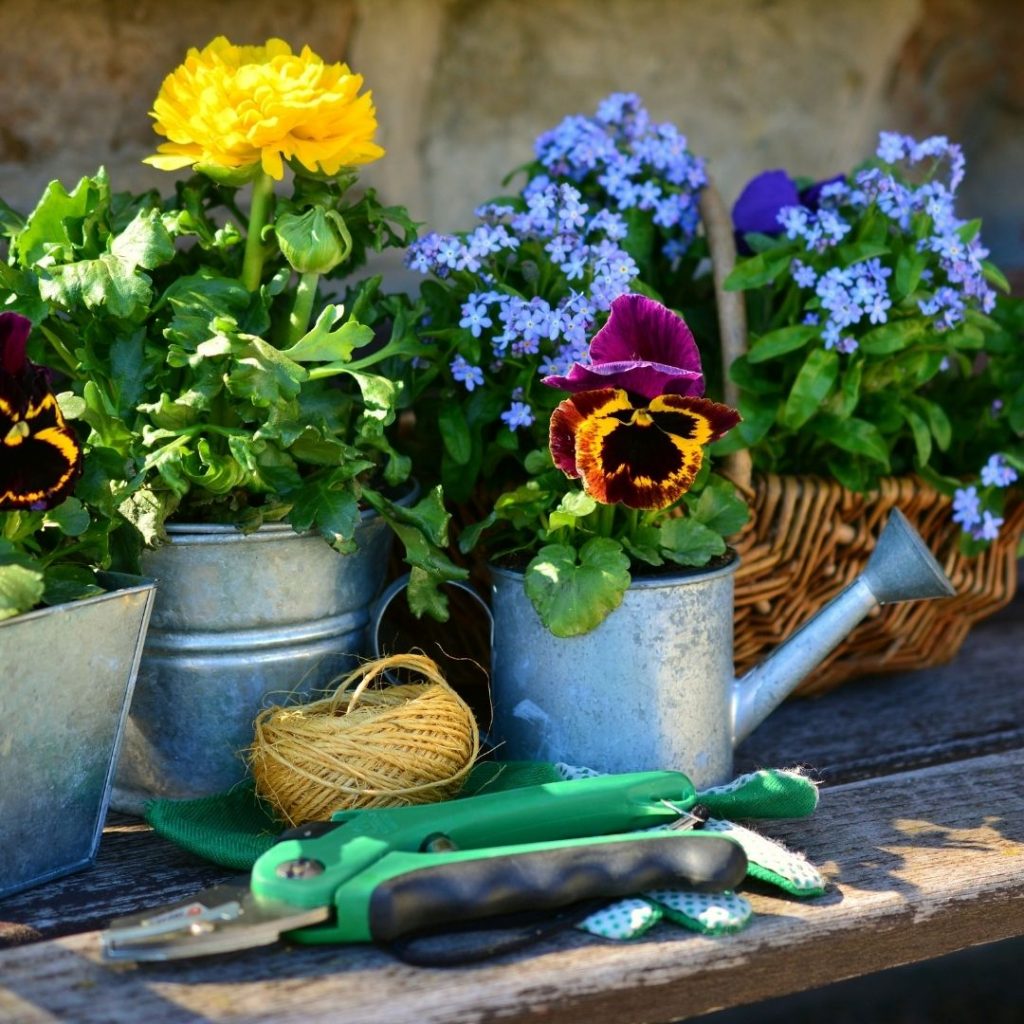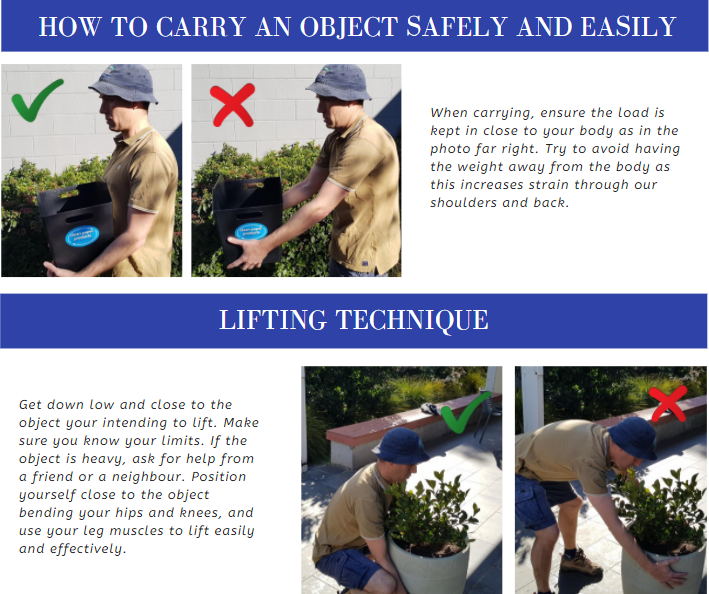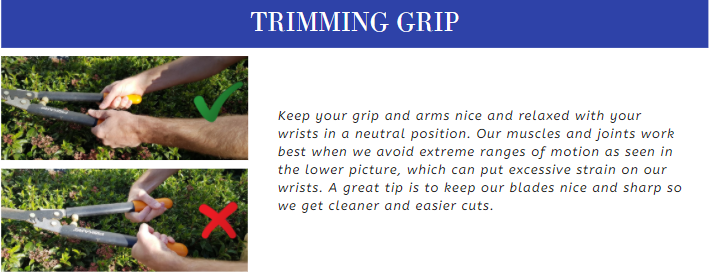Spring has sprung, and as we have less frosty mornings and increasingly warmer days on the horizon we are returning to the garden. Perhaps it’s been a while since we’ve had a good work out in the garden. Here are some great tips to help you with some effective injury free gardening.

It’s important to keep this in mind, perhaps it’s been 4-5 months since we’ve done a hard days work in the yard. So ease into it and hold back a bit from the temptation of doing it all in one day, your body will thank-you.
The start of a new season is also a good time to take a stock take on the equipment you have. Do I have those different length shovels, adjustable hedge trimmers, pruners, shoes and gloves?
Is it in good working order? Perhaps it needs some oil on the hinges, some sharper blades on the chainsaw and hedge trimmers? This all helps greatly and allows us to do more work in the garden with greater ease and less effort!
Now We Are Out In The Garden And We Have A Few Jobs we want To Get To;
- mow the lawns
- prune (trees)
- cut down branches
- install a new irrigation system
- shovel on some new mulch and
- lift some logs to make a retaining feature
It’s good to plan your day ahead for a number of reasons, but its even better to plan it out so we can get a lot done and without pulling up sore or injured after.
First, know your limits of what you can and can’t do, for those heavier lifts, can you get someone else to help or lend a hand?
Second, start with a relatively easy to moderate task as a warm-up, say mow the lawn or some pruning. Once you’ve warmed up, its then a good idea to then head into the hardest task you have planned for example, shovelling, chopping and carrying firewood. This ensures we approach these tasks fresh and aren’t fatigued, reducing the risk of injury. As we tire throughout the day it then a good idea to switch to less physically demanding tasks, such as sewing seeds, installing and adjusting the irrigation system.
From There, Is There Any Other Adjustments And Techniques I Need To Be Mindful Of?
Yes, there are a few.
When lifting and shovelling, keep the load as close to your body as possible, this may mean using a shorter length shovel. Try to reduce the amount of excessive twisting whilst lifting, we are most efficient and strongest when we approach lifting front-on.

When using pruning and hedge trimming instruments, ensure your shoulders aren’t over reaching away from your body and are at a comfortable height. For example sustaining our arms at shoulder or head height for more then a few seconds can be very fatiguing, so can we utilise extenders or a step ladder to reduce that strain? From here,what position are our wrists in? Wrist are another common joint to get sore and tired after spending a lot of time in the garden. So it’s best that we avoid the extreme ranges of motion in our wrist and to keep them close to a neutral position.

Importantly, Listen To Your Body, And If You Do Feel Strain Ask Your Self These Questions?
- Can I adjust my technique to reduce the strain?
- Can I perform another task in the garden to reduce the strain?
- Do I require a short break to recharge the batteries? Or do I require a period of 1 or so days off to allow for more substantial recovery?
- Or is this something I best seek advice for and make a plan for it to not happen again?
It’s important that we stay injury free, as getting out in nature and doing some gardening isn’t not only something we enjoy, but it’s also a great form of exercise to keep us fit and well!
Remember if you are injured or have a niggle come and see us, we can help you return to gardening and stay injury free. Book online today over here.
Click here to download our information sheet called ‘The Happy Gardener’ with some great gardening technique and stretches including what you have learnt above and many more.


